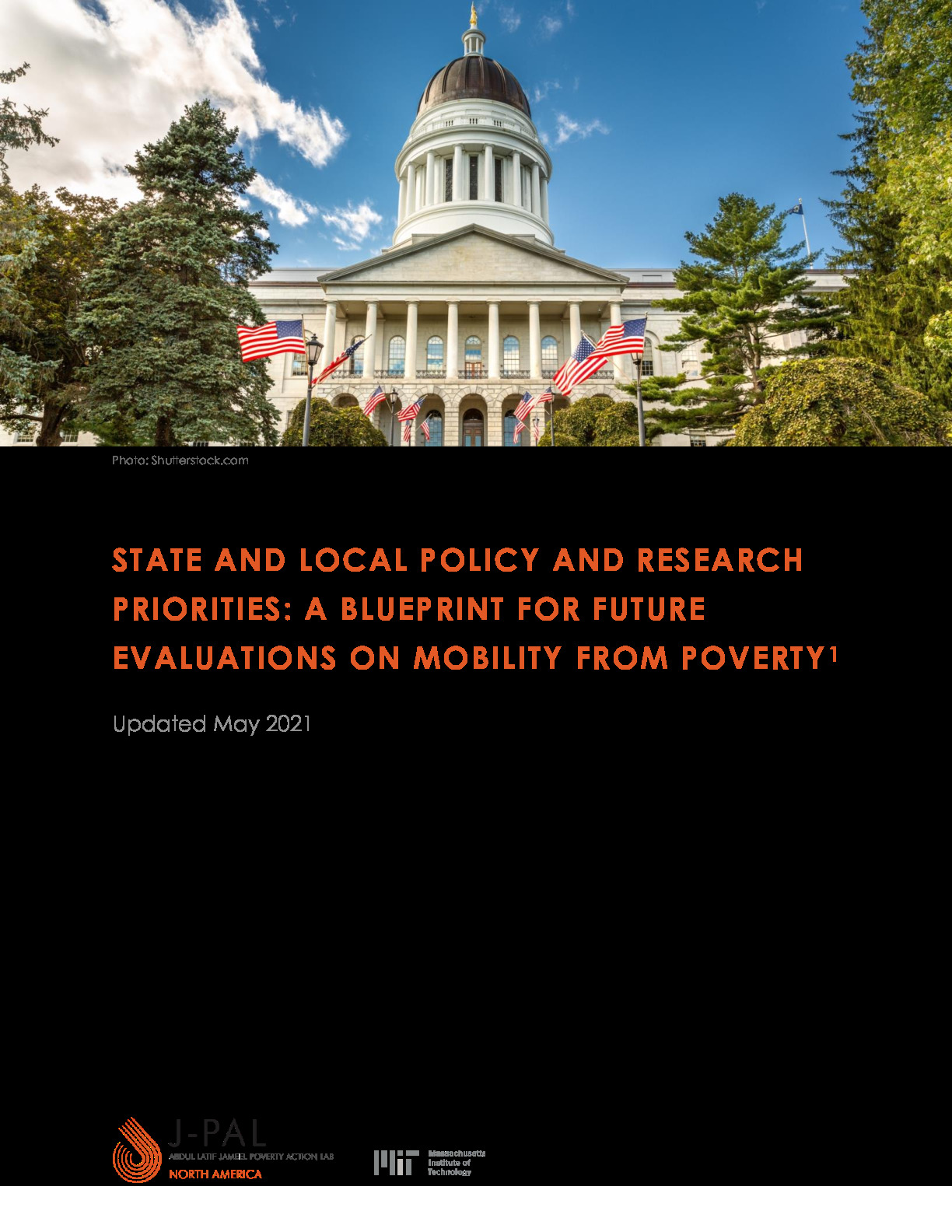State and Local Priorities: A Blueprint for Future Evaluations on Mobility from Poverty
Across the United States, approximately 11.7 percent of the population lives in poverty. Aside from measures of income, poverty also encompasses the experiences of the many individuals disempowered by the political and economic system and subjected to social isolation and stigma. A large body of research highlights that compared to their more well-off peers, children who grow up living in poverty are much less likely to break the intergenerational cycle of poverty. Limited economic mobility is also exacerbated by other trends across the United States, such as rising residential segregation by income, increased levels of incarceration, and a rapidly shifting labor market. National trends also obscure significant disparities in upward mobility by race and geography, among other factors.
J-PAL North America aims to answer key policy questions related to reducing poverty and promoting upward mobility. Over the past five years, state and local governments submitted 137 research proposals detailing their priorities for addressing policy questions using rigorous evidence. These proposals have led to 19 randomized evaluations and helped establish a network of state and local partners and researchers. Insights from the repository of past proposals have been integrated with discussions that J-PAL staff have conducted with state and local governments and J-PAL affiliated researchers to create a blueprint for future evaluations of policies and programs aimed at alleviating poverty and promoting upward mobility.
This report lays out key areas where new or additional research is best positioned to address barriers to mobility from poverty, by summarizing the core research priorities from state and local governments, discussing ongoing or completed evaluations, and outlining opportunities for future research.
